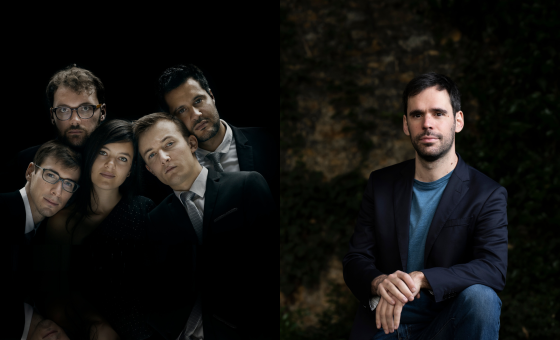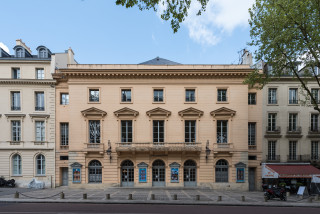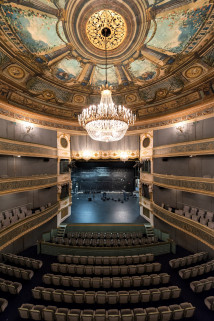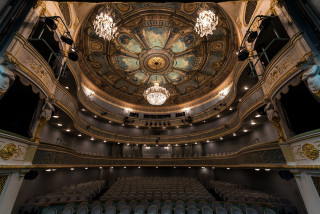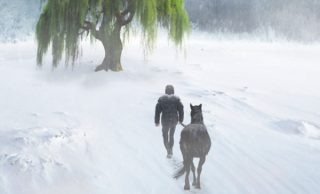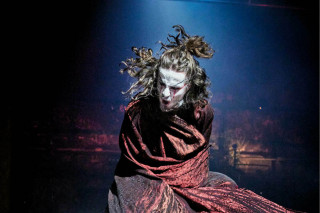Diary: to do on site
Théâtre Montansier - Eclats de jeunesse
Sunday 22 February 2026
17:00 to 18:10
Location : Théâtre Montansier
Destination
13 Rue des Réservoirs
78000
Versailles
GPS coordinates
Latitude : 48.808077
Longitude : 2.12423
Event Organizer
Théâtre Montansier
Location
Théâtre Montansier
13 Rue des Réservoirs
78000
Versailles
Presentation
When Mozart - then aged 28 - put the finishing touches to his Quintet K.452 for piano, oboe, clarinet, horn and bassoon in March 1784, he knew he had achieved a historic first.
He wrote to his father: "I consider it, myself, to be the best I have written in my life. Oh, how I wish you could have heard it! At once refined chamber music, aristocratic entertainment and a perfect example of concertante dialogue, it is indeed an achievement that no other composer has matched.
Moussorgsky usually composed slowly, laboriously, and rarely finished his pieces. But when, in 1874, he decided to transcribe into music the emotions he felt when confronted with the paintings of his deceased friend, the painter Viktor Hartmann, exhibited at the Academy of Fine Arts in St. Petersburg, it took him just 3 weeks to write Tableaux d'une exposition: "For the moment, I think it's a success.
Ravel, for his part, harshly judged his Pavane pour une infante défunte, composed in 1899 at the age of 24, while studying composition with Fauré at the Paris Conservatoire. Commenting on this Pavane, a gentle, melancholy work of great expressive power - and one that was very well received by the public - Ravel said: "I can see its faults: the influence of Chabrier is too obvious, and the form is rather poor. The remarkable interpretation of this incomplete and unadventurous work contributed greatly, I think, to its success."
With Ensemble Ouranos, wind quintet (Mathilde Calderini, flute Amaury Viduvier, clarinet Philibert Perrine, oboe Rafael Angster, bassoon Nicolas Ramez, horn) and Tanguy de Williencourt, piano.
Program :
Mozart: Overture to The Magic Flute
Ravel: Pavane for a Dead Infanta
Mozart: Quintet for piano and winds
Mussorgsky: Pictures at an Exhibition
Moussorgsky usually composed slowly, laboriously, and rarely finished his pieces. But when, in 1874, he decided to transcribe into music the emotions he felt when confronted with the paintings of his deceased friend, the painter Viktor Hartmann, exhibited at the Academy of Fine Arts in St. Petersburg, it took him just 3 weeks to write Tableaux d'une exposition: "For the moment, I think it's a success.
Ravel, for his part, harshly judged his Pavane pour une infante défunte, composed in 1899 at the age of 24, while studying composition with Fauré at the Paris Conservatoire. Commenting on this Pavane, a gentle, melancholy work of great expressive power - and one that was very well received by the public - Ravel said: "I can see its faults: the influence of Chabrier is too obvious, and the form is rather poor. The remarkable interpretation of this incomplete and unadventurous work contributed greatly, I think, to its success."
With Ensemble Ouranos, wind quintet (Mathilde Calderini, flute Amaury Viduvier, clarinet Philibert Perrine, oboe Rafael Angster, bassoon Nicolas Ramez, horn) and Tanguy de Williencourt, piano.
Program :
Mozart: Overture to The Magic Flute
Ravel: Pavane for a Dead Infanta
Mozart: Quintet for piano and winds
Mussorgsky: Pictures at an Exhibition
Pics
Pics
We also suggest...
From Monday 08 to Tuesday 09 December 2025
Monday, Tuesday
20:30 to 21:45
Monday 12 January 2026
10:00 to 16:00

